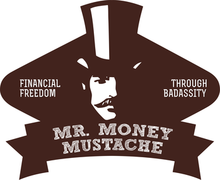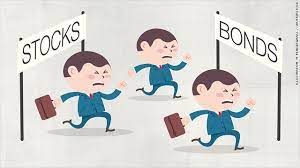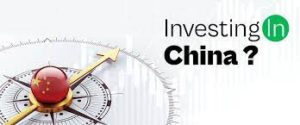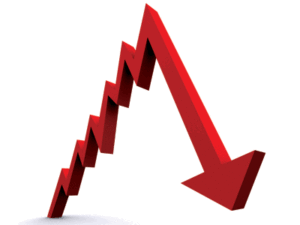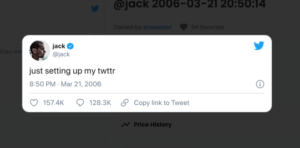I read his book real fast and discovered that the great Ray Dalio and I think the same way about one thing

You’d think that someone who’s written more than a dozen books on entrepreneurship, wealth building, and investing would himself be a regular consumer of such books, if only to keep up with his trade.
I don’t do that. In fact, since I challenged myself to read at least 50 books a year 25 years ago, fewer than 10% of them were of that kind. I have two excuses, one legitimate and one not.
My official excuse is that I have a method of speed-reading “practical” (i.e., non-fiction and non-philosophical) books that precludes me from calling what I do “reading.” It’s a system I’ve developed over the years that increases my reading speed from my standard (post-dyslexic, still-present ADD) rate of 200 words a minute to about 1,500 words a minute, which means digesting a book of 300 to 350 pages and 90,000 words in about four hours.
That’s not reading. It’s more akin to skimming. I dignify the practice by calling it “purposeful reading,” by which I mean seeking out nuggets of information and/or ideas that are currently useful to me, and ignoring everything else.
Today’s bit on the subject of wealth building is taken from a book I read “purposefully” last week. Ray Dalio’s Principles: Life & Work.
Ray Dalio is my age and, like me, he grew up on Long Island and began starting businesses when he was in his early teens. Unlike me, his interest was always in the financial markets, and so he had the advantage (and disadvantage) of limiting his business growth to one industry, which he eventually dominated through persistence, intelligence, and hard work.
As founder and top dog at Bridgewater Associates, a hedge fund that manages nearly $200 billion, he’s become not only personally super-rich, he has become a respected media pundit on the economy and the markets. (A glance at his track record will tell you he’s been on the money now for more than 40 years.)
There are things I don’t like about Dalio. I don’t like his politics, and I don’t agree with much of what he says about geopolitics either. But he certainly knows a lot more about making money in the stock market than I do. Or at least he’s done a lot better than I have by persuading or otherwise convincing super-wealthy people and financial funds to trust him with their millions.
Hey, sometimes you gotta give a self-made wealthy man his due. And I give it up to Dalio. He’s probably 100 times richer than me!
And I suppose that’s why, when I saw his book on a bookshelf in my house in Nicaragua (no idea how it got there), I picked it up and gave it a quickie read.
In Principles: Life and Work, Dalio presents what he calls the “guiding principles” that he used to create Bridgewater’s enormous growth and his personal success.
Because I am not fond of his social, political, and philosophical views (although I suspect he presents them primarily to be treated well by the Legacy Media), I reviewed the “principles” he laid out in the book with an arm’s length of critical distance.
I want to focus on one of those principles here, which I selected for three good reasons:
* It is a mental technique that Dalio used to develop the other techniques and strategies he recommends in his book.
* It’s a way of thinking that I’m familiar with because I’ve used it habitually in my career.
* It ties nicely into The Blind Watchmaker, a book by the great Richard Dawkins that I read (and reviewed here) recently, and is a key concept in a topic I’ve written about (and will continue to write about) in this blog: the mind as a self-learning machine.
The Mind as a Self-Learning Machine

I don’t know whether this is common to most people, but I’ve always felt my mind was a tool that had could be constantly expanded and improved.
From the moment I began to think about thinking, which was as early as I can remember thinking, I was acutely aware of the fact that there were things I could figure out and problems I could solve more quickly and with greater ease than others. These were mental challenges that involved conceptualization and engineering: putting bits and pieces together to form a coherent whole.
I was proud of my ability to do that, but I’m happy to say that I never assumed it would be available to me indefinitely or would automatically improve as I got older. On the contrary, I always had the sense that if I did not continually and continuously use and sharpen those skills, they would eventually get rusty and less sharp.
In the same vein, in those early years, I was also aware – although perhaps not as acutely – that there were things that I could not do quickly and easily. Routine things such as reading. (As I’ve said, I was and still am a bit dyslexic.) And paying attention at school. (I had and still have attention deficit disorder.) Happily, I never believed that these shortcomings could limit me in any serious way. I believed I could eventually overcome them or at least compensate for them if I put in the work and time.
How to Turn Your Brain into an AI Machine

In retrospect, I see that I saw my mind as not just a box containing a fixed number of tools, but as a machine akin to a computer that could figure out solutions to problems through a series of simple, yes-and-no mental transactions, and could become better at learning how to think about something new by using thought processes that had helped me find solutions to problems in the past.
In Principles, Dalio says that he had a similar way of looking at the problems and challenges he faced in overcoming his early failures in business and eventually building Bridgewater to what it is today.
He says he believes that a key element in his success was in not being intimidated by difficult problems or new challenges, but in reminding himself that the brain he was using was a better one than the brain he had earlier in his life, and that to move ahead, regardless of what he was facing, was a matter of installing new circuits when he could find them and inputting new facts and ideas on a constant and continual basis.
He recommends this as a practice for anyone reading the book. He also says that it is of the upmost importance to recognize that if you are running into roadblocks, they can be bypassed or overcome by looking around for more inputs – other facts, other opinions, and other ways of thinking about your problems and challenges.
Passing Roadblocks & Jumping Hurdles

I see this as a BIG strategy for success. But I know that for many people, including many very smart and ambitious people I’ve worked with over the years, it is a secret – i.e., a strategy that is not visible to them.
And that is often because of the success they enjoyed early in their careers – the success that came from using the tools that were already in the box they came with. Since these tools were so good at getting them from A to B, or even from B to C, they assumed they could get them from C to D.
But, as they climbed the corporate or entrepreneurial mountain, these tools were no longer useful. Some, in fact, could be detrimental.
I don’t have the time (and you don’t have the time) to get into too many examples here of how this happens all the time in every sort of business (and, really, in every sort of challenging human endeavor, as I’m sure Dalio himself would agree). I’ll give you one example and hope that suffices until I write about this again.
One of my partners in business has a gift for understanding the limits of personal integrity and business ethics. He spent the first half of his career in an industry where cutting the throats of one’s competitors was not just the game but the fun of the game, too.
When he came into my industry, he brought that mindset with him. And it served him well in hiring untrustworthy people and in avoiding business relationships with untrusty partners.
But it stymied him in growing his business beyond the $10 million range. When he reached that point, his instinctive reaction to anything that wasn’t going well was to look for the employee, the partner, or the competitor that was secretly doing him wrong.
This was bad for two reasons that were obvious to me.
His natural distrust of his employees made him susceptible to micromanaging their activities, which made those employees reluctant to be innovative or even to suggest doing things differently. And this, in turn, led to a corporate culture that was self-conscious, averse to innovation, and, in some cases, political.
The same mindset made it difficult – almost impossible – for him to go into joint ventures and marketing agreements with his competitors. Even when I could show him the clear win-win benefits to such relationships, he was incapable of opening his mind to them.
Now you can divine other diagnoses for his behavior, but to me it was grounded in the way he thought about his own mind. He could not accept the possibility that to achieve the growth he needed, he had to first be open to the possibility that the mental tools he had were no longer sufficient to do the job he wanted to do.
I could write a hundred more pages on this particular problem, this particular way of limiting one’s business potential and possibilities by being reluctant to inputting new facts, ideas, and even circuitry as the business or enterprise grows.
But I’ll leave it at that for the moment. If you suspect you might do better and accomplish more by considering this, you probably can.


